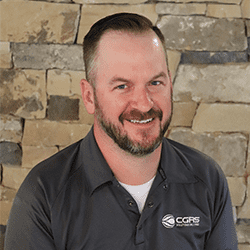Navigating the approval process for an RNG project
Northern Colorado Clean Cities recently interviewed CGRS and City of Longmont, Colorado, representatives about the ins and outs of constructing a system that converts biogas at a wastewater treatment plant to Renewable Natural Gas (RNG). The goal: provide useful information about the decision-making and construction processes so other jurisdictions can determine if a similar project is right for their facilities and their communities. The following article is based on the content of those interviews.
Call a CGRS Expert:
800.288.2657

Cory Kahler
Water/Wastewater
Operations Manager
Mobile: 720.537.9387
Because the City of Longmont had a unique CNG facet to its Biogas Treatment and Renewable Natural Gas Fueling Station Project at its (WWTP), the approval process was a bit different than it is for biogas systems or CNG fueling projects alone.
The process started with helping those who had to approve the project understand that methane and biogas can be a good thing, said John Gage, P.E., City of Longmont Public Works and Natural Resources Civil Engineer.
“Everyone from City Council to sustainable advisory boards continued to think methane in general and combustion of methane is a bad thing when really, when it comes from a renewable source like wastewater, it’s not,” he said. “It’s another form of a renewable type of fuel just like solar power. I think some reframing of that mindset was just educating people. We tried to reframe that term ‘natural gas.’”
Longmont’s project included a large storage building that housed administrative offices on one side and an area for storage and fueling of its CNG waste trucks on the other.
“Our Waste Services manager had a strong desire to have that indoors,” Gage said. “So that created some really interesting permitting challenges from the sense of fueling CNG inside a building. There haven’t been too many of those types of projects. We had a lot of permitting discussions with the fire marshal, the fire department and building department.”
As a result of those discussions, the building has ample smoke and methane detection, automated heating, ventilation and air conditioning (HVAC) processes, and lots of other safeguards, he said.
“Risk can certainly be mitigated in a lot of these projects,” Gage said. “It’s just another part of getting the project through. It’s just education.”
The U.S. Environmental Protection Agency (EPA) doesn’t enter the picture until the end of the project, and if the WWTP already has an air-quality permit, a new one isn’t required, he explained.
If the jurisdiction is injecting its RNG into a utility pipeline, it will need a permit from the natural gas utility, Gage said.

